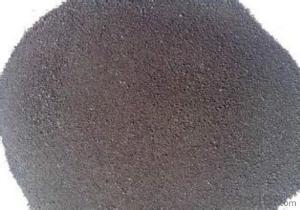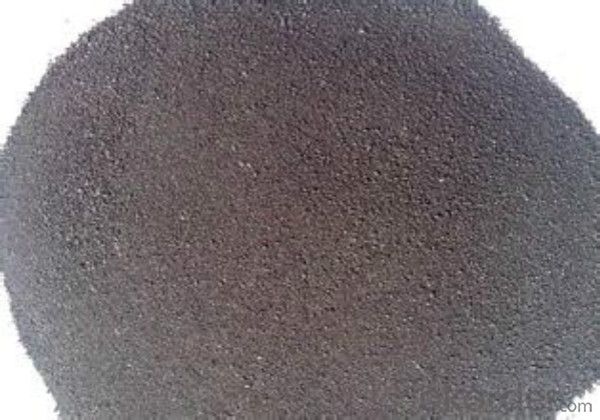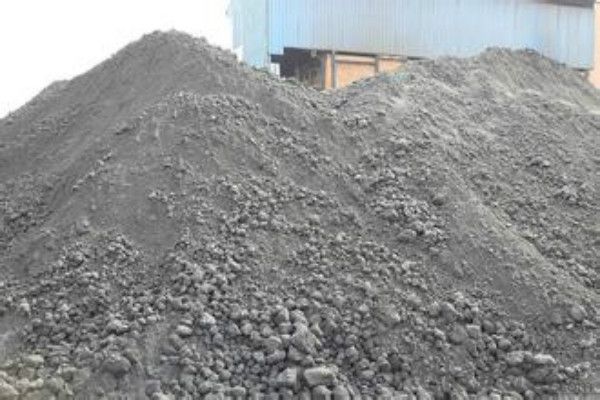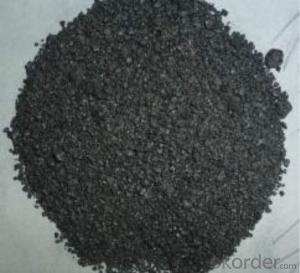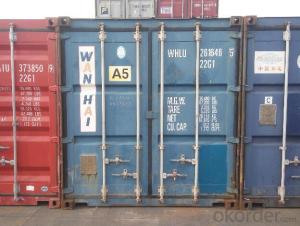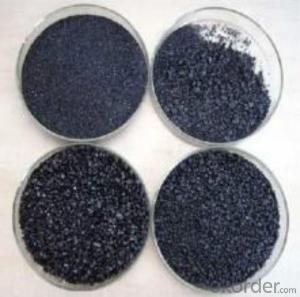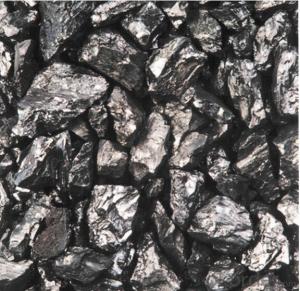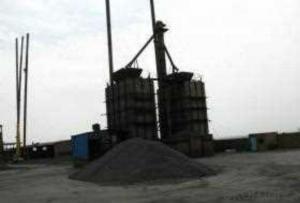FC 99% Calciend Petroleum Coke as Injection Carbon
- Loading Port:
- Tianjin
- Payment Terms:
- TT OR LC
- Min Order Qty:
- 20.1
- Supply Capability:
- 2010 m.t./month
OKorder Service Pledge
OKorder Financial Service
You Might Also Like
Brief introduction
Calcined Petroleum Coke comes from delayed coke which extracted from oil refinery. Although Calcined Petroleum Coke contains a little bit higher level of sulfur and nitrogen than pitch coke, the price advantage still makes it widely used during steel-making and founding as a kind of carbon additive/carburant. It is playing more and more important role in the industry.
BaoSteel is world famous organization. This calcined petroleum coke's raw material is from Bao Steel, which has great quality guarantee. Bao Steel also named this coke as Pitch Coke.
Features
Our product has follwing advantages:
The morphology, chemistry and crystallinity of recarburisers
have a major impact on the overall casting cost. The combined
application and cost benefits, which are derived through the
use of Desulco, enable foundries to manufacture castings in a
highly cost effective manner.
reduces
Recarburiser consumption
Power consumption
Inoculant consumption
MgFeSi consumption
Furnace refractory wear
Scrap rate
Tap to tap time
Slag inclusions risk
Chill
increases
Casting microstructure
Productivity
Process consistency
Specifications
Products | CPC | ||
F.C.% | 98.5MIN | 98.5MIN | 98MIN |
ASH % | 0.8MAX | 0.8MAX | 1MAX |
V.M.% | 0.7 MAX | 0.7 MAX | 1 MAX |
SULFUR % | 0. 5MAX | 0. 7MAX | 1MAX |
MOISTURE % | 0.5MAX | 0.5MAX | 1MAX |
Pictures
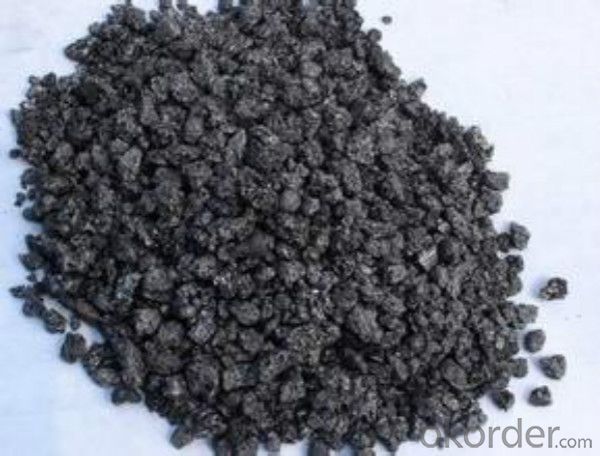
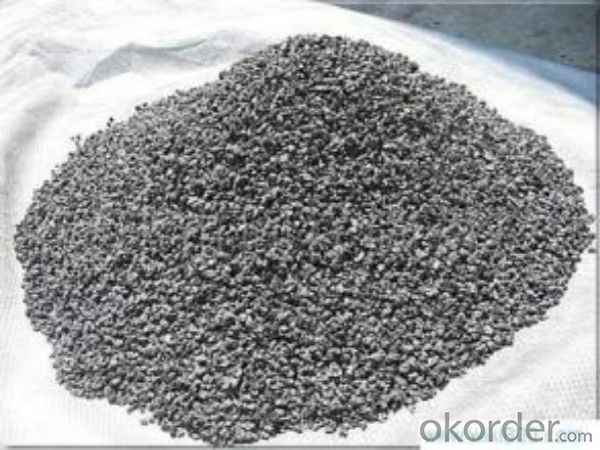
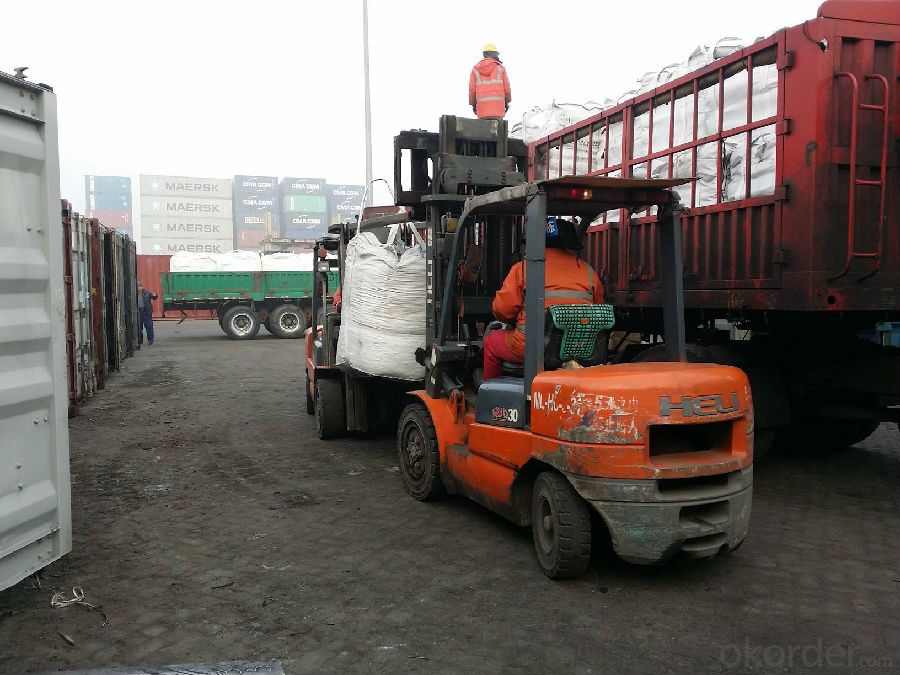
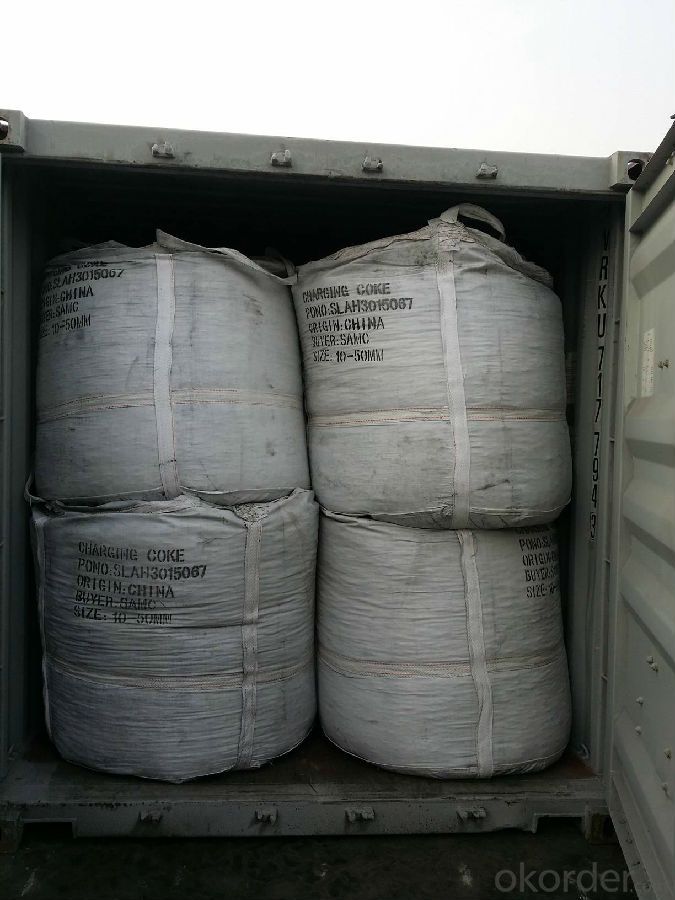
FAQ
1 What is the package?
In jumbo bag with/without pallet
2 What is the delivery time?
25 days after receiving the workable LC or down payment
3 What is the payment term?
T/T, L/C,D/P,D/A
- Q: What are the impacts of carbon emissions on the stability of mountains?
- Carbon emissions have significant impacts on the stability of mountains. One of the most prominent impacts is the acceleration of global warming, which leads to the melting of glaciers and permafrost. As mountains are home to many glaciers, the increase in temperature causes these glaciers to melt at an alarming rate. This melting can result in the destabilization of mountains, leading to increased landslide and rockfall activity. Furthermore, carbon emissions contribute to the acidification of rainwater. Acid rain can erode the rocks and soil in mountains, weakening their stability. This erosion can lead to slope instability, making mountains more susceptible to landslides and other forms of mass movements. Additionally, carbon emissions contribute to changes in precipitation patterns. Mountain ecosystems heavily rely on a delicate balance of rainfall and snowfall. However, climate change caused by carbon emissions disrupts this balance, leading to altered precipitation patterns. This can result in increased water runoff and a reduction in snowpack, both of which contribute to mountain destabilization. Moreover, carbon emissions have indirect impacts on mountain stability through changes in vegetation patterns. As temperatures rise, plant species may migrate to higher altitudes in search of cooler climates. This can result in the loss of vegetation in lower elevation areas, which play a crucial role in stabilizing slopes and preventing erosion. The absence of plant cover leads to increased soil erosion, leaving mountains more vulnerable to landslides and other erosive processes. In conclusion, carbon emissions have detrimental impacts on the stability of mountains. The acceleration of global warming, acidification of rainwater, altered precipitation patterns, and changes in vegetation patterns all contribute to the destabilization of mountains. It is crucial to reduce carbon emissions and mitigate climate change to protect and preserve these majestic natural formations.
- Q: What do you stand for?Tar, smoke, nicotine, and carbon monoxide. What do you mean? What's the size of the smoke, or the size of the smoke? What's the connection? Smoking is harmful, so how do you choose to smoke smaller cigarettes?
- The smoke was in the size of a smoker is refers to the amount of nicotine. The smoke is enough to mouth after the majestic. Enough cool,A novice at it. I think most of the carbon monoxide content. Carbon monoxide content is high after the head halo. The novice, this must be kept large. Tar, tar that smoke burning more fully the feeling in the mouth sweet, sweet fragrance..When is the strength of cigarettes and their taste.
- Q: Why is the solubility of carbon in austenite larger than that in ferrite?
- The carbon is soluble in the FCC -fe, forming austenite; the carbon dissolves in the body centered cubic alpha -fe to form ferrite. The gap radius of BCC (0.291,0.154) and the gap radius of face centered cubic (0.225,0.414) are large.
- Q: What is carbon sequestration and how does it work?
- The process of carbon sequestration involves the capture and storage of carbon dioxide (CO2), preventing its release into the atmosphere and its contribution to climate change. In the fight against global warming, this process is of utmost importance because CO2, as a greenhouse gas, traps heat and leads to an increase in the Earth's temperature. There are various techniques for carbon sequestration, with terrestrial, oceanic, and geological methods being the most commonly used. Terrestrial sequestration entails the capture of CO2 from the atmosphere and its storage in plants, trees, and soil. This can be achieved through afforestation, reforestation, and adopting sustainable agricultural practices that boost soil carbon storage. On the other hand, oceanic sequestration involves the storage of CO2 in the oceans, taking advantage of their natural ability to absorb and retain large quantities of CO2. By enhancing the ocean's capacity to capture CO2, for example through the use of algae or other marine plants, we can effectively decrease the concentration of CO2 in the atmosphere. Geological sequestration, meanwhile, revolves around capturing CO2 from industrial sources like power plants or factories and injecting it deep underground into geological formations. These formations, such as depleted oil and gas reservoirs or saline aquifers, serve as natural storage sites for the captured CO2. Over time, the injected CO2 becomes trapped and mineralizes, permanently storing it away from the atmosphere. Moreover, technological advancements have made it possible for carbon sequestration to occur through methods like direct air capture (DAC) and carbon capture and storage (CCS). DAC involves the use of machines or devices to directly capture CO2 from the air, while CCS focuses on capturing CO2 emissions from industrial processes before they are released into the atmosphere. Once captured, the CO2 can be transported and stored underground, either in geological formations or in depleted oil and gas reservoirs. In summary, carbon sequestration plays a vital role in mitigating climate change. By capturing and storing CO2, we can reduce the concentration of greenhouse gases in the atmosphere and help stabilize the Earth's climate. However, it is important to note that while carbon sequestration is an important solution, it should not be viewed as the sole solution. Combining carbon sequestration with other strategies for mitigating climate change, such as reducing emissions and transitioning to renewable energy sources, is crucial for effectively combating this global challenge.
- Q: How does carbon impact air quality?
- The release of carbon dioxide (CO2) and other carbon-based pollutants into the atmosphere can significantly affect air quality. When fossil fuels like coal, oil, and natural gas are burned, they emit large amounts of carbon dioxide, a greenhouse gas that contributes to climate change. This increase in carbon dioxide levels in the atmosphere causes the Earth's surface to warm, leading to adverse effects on air quality. Moreover, incomplete combustion of fossil fuels and other organic materials can also release carbon-based pollutants like carbon monoxide (CO) and volatile organic compounds (VOCs). These pollutants have detrimental effects on human health and can contribute to the formation of ground-level ozone, which is a major component of smog. Breathing in ozone can cause respiratory problems, lung damage, and worsen existing respiratory conditions such as asthma. Additionally, burning fossil fuels, biomass, and other organic matter releases carbon particles known as black carbon or soot. These particles directly impact air quality by absorbing sunlight and reducing visibility. When inhaled, they can penetrate deep into the lungs, leading to respiratory issues and potential long-term health problems. To improve air quality and mitigate the negative impacts on human health and the environment, it is crucial to reduce carbon emissions. This can be achieved by transitioning to cleaner and more sustainable energy sources, such as renewable energy. Additionally, implementing stricter regulations and emission standards for industries and vehicles can contribute to reducing carbon pollution and improving overall air quality.
- Q: Is the power consumption of carbon fiber heating very high?
- Power consumption calculation:The information you give is not enough to calculate the approximate power consumption!You also need to know your building structure, insulation level, the laying power of electric heating, personal use, setting temperature, local temperature difference between indoor and outdoor, control device is intelligent temperature control and so on!There is also the first heating season, because the building is humid, the electricity consumption will be higher!How to save electric energyIf you want to save electricity, you need it:Give the building a good heat insulation,Use double or three layers of glass,Intelligent temperature controller, and according to the rules of personal life to set, make full use of energy saving, and these are not to reduce somatosensory comfort conditions,The carbon fiber heating cable laying and electric heating, far infrared ray to human body temperature will be higher, also need 18 degrees of comfort, the use of carbon fiber electric heating heating cable only need to set at 16 degrees, so the temperature can be, 2 DEG C, and the temperature difference is small at the only Province 2 C energy, in fact is not the case, as we all know, small temperature difference, the indoor temperature is more easy to maintain!Apply the peak and valley tariff to the local electricity department, so that the electricity price will be around 0.35 yuan at night, and the temperature will be greater at home and in the evening, which will save a lot of money!Do all of this and I'm sure you'll save 20% of your electricity bill!Poly Jiao carbon fiber heating cable electric heating - for you, we are more professional
- Q: How does carbon contribute to air pollution?
- Carbon contributes to air pollution primarily through the combustion of fossil fuels. When carbon-based fuels such as coal, oil, and natural gas are burned for energy, they release carbon dioxide (CO2) into the atmosphere, which is a greenhouse gas that contributes to global warming and climate change. Additionally, incomplete combustion of these fuels can produce other pollutants such as carbon monoxide (CO), volatile organic compounds (VOCs), and particulate matter, which all have detrimental effects on air quality and human health.
- Q: Why carbon fiber resistant to low temperature
- Resistance to 180 DEG C carbon fiber can be low temperature, under this condition, many materials are brittle, even sturdy steel has become fragile than glass, and carbon fiber under this condition is still very soft. Therefore, the carbon fiber composite core can be used in the design and manufacture of transmission carriers under extremely cold conditions, such as Antarctic research and research.
- Q: How does carbon affect the pH of water?
- Carbon does not directly affect the pH of water. However, when carbon dioxide dissolves in water, it forms carbonic acid, which lowers the pH of the water, making it slightly more acidic.
- Q: What are the consequences of increased carbon emissions on global food security?
- Increased carbon emissions have significant consequences on global food security. Firstly, rising carbon dioxide levels can lead to changes in temperature and precipitation patterns, affecting crop productivity and water availability. This can result in reduced yields, crop failures, and increased vulnerability to pests and diseases, ultimately impacting food production and availability. Furthermore, carbon emissions contribute to climate change, which exacerbates extreme weather events like droughts, floods, and heatwaves. These events can destroy crops, disrupt supply chains, and increase food prices, making it difficult for vulnerable populations to access nutritious food. Additionally, climate change may lead to the loss of arable land due to desertification, sea-level rise, or other environmental changes, further diminishing food production capacity. Moreover, carbon emissions contribute to ocean acidification, which harms marine ecosystems and disrupts the food chain. This can negatively impact fish stocks and other seafood sources, affecting the livelihoods of coastal communities who rely on fishing as a primary source of food and income. Overall, increased carbon emissions have severe consequences for global food security, threatening the stability and accessibility of food supplies both on land and in the oceans. Addressing carbon emissions and adopting sustainable practices are essential in safeguarding our food systems and ensuring the wellbeing of future generations.
Send your message to us
FC 99% Calciend Petroleum Coke as Injection Carbon
- Loading Port:
- Tianjin
- Payment Terms:
- TT OR LC
- Min Order Qty:
- 20.1
- Supply Capability:
- 2010 m.t./month
OKorder Service Pledge
OKorder Financial Service
Similar products
Hot products
Hot Searches
